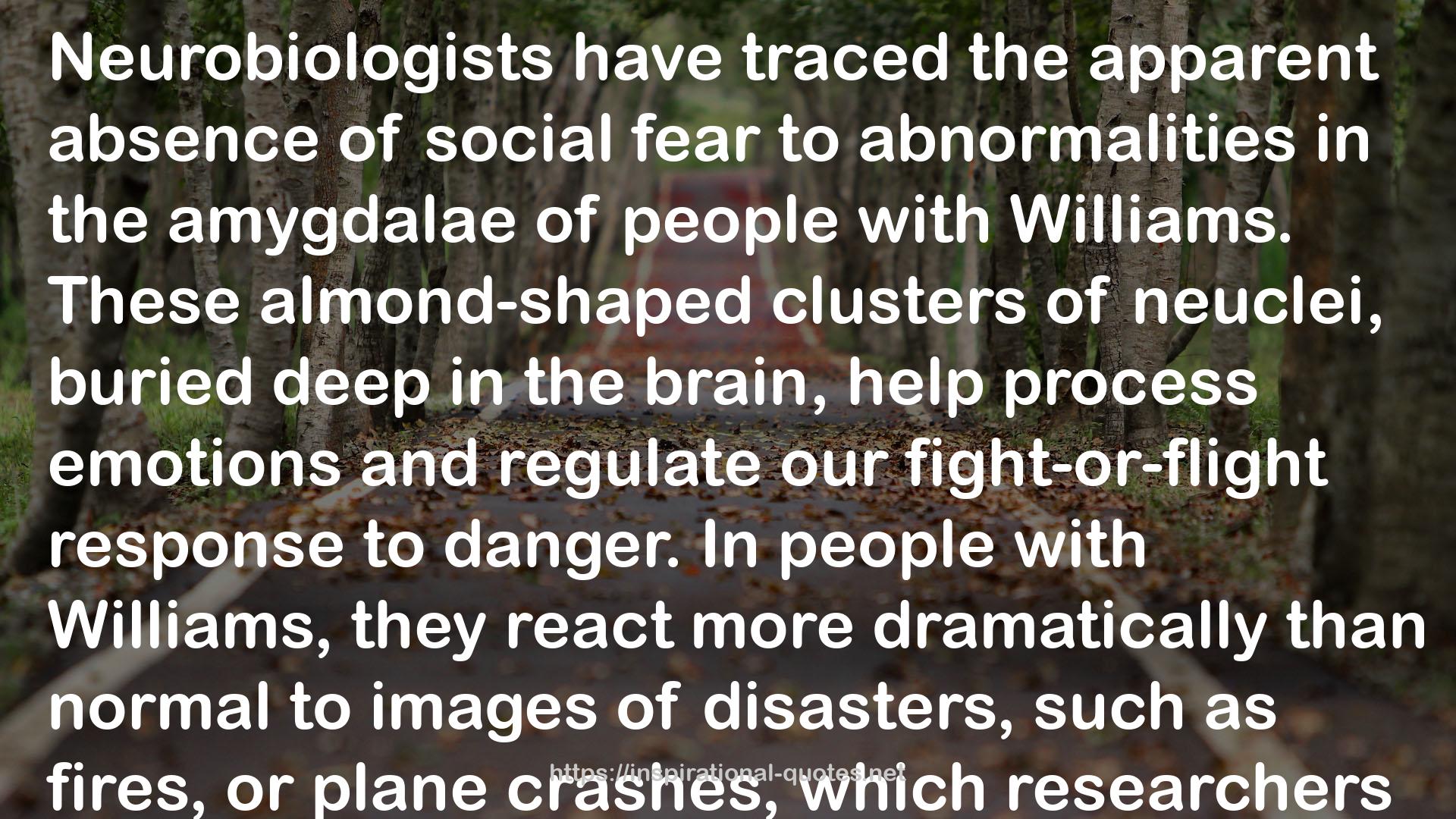" Neurobiologists have traced the apparent absence of social fear to abnormalities in the amygdalae of people with Williams. These almond-shaped clusters of neuclei, buried deep in the brain, help process emotions and regulate our fight-or-flight response to danger. In people with Williams, they react more dramatically than normal to images of disasters, such as fires, or plane crashes, which researchers think may explain why people with Williams often develop anxiety disorders. Conversely, they respond with abnormal indifference to images of people making fearful or angry facial expressions. The amygdalae of people without Williams tend to be extremely sensitive to those expressions since we have evolved to see them as warnings. Getting to close to a hostile person, or an aggressive ape, probably cost many of our ancestors their lives. Seeing a look of panic on someone else's face and starting to run probably saved the lives of many more. "
― , The Boy Who Loved Too Much: A True Story of Pathological Friendliness
